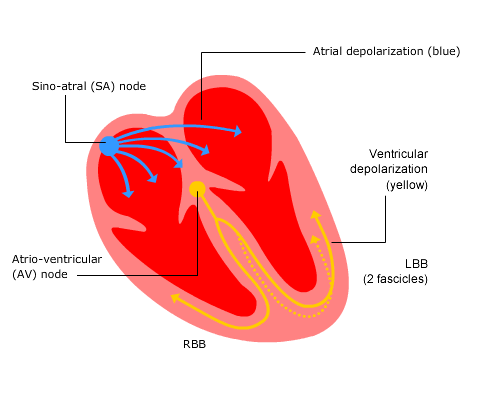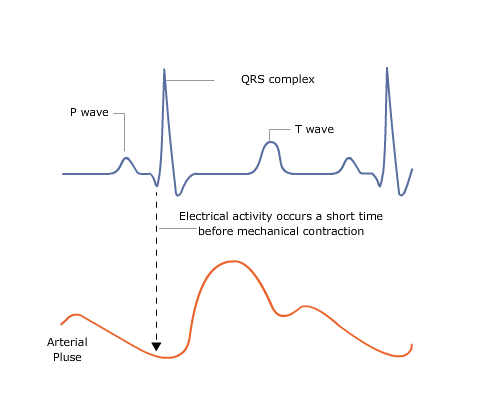Ventricular
Atrial impulses reach the atrio-ventricular (AV) node which acts to slow conduction to the ventricles by ~100 ms.
From the AV node, depolarization continues through the septum via the His-Purkinje system and the left and right bundle branches (LBB, RBB) and then on to the ventricles, which depolarize from inside to out.
Ventricular depolarization is represented by the QRS complex on the ECG, and precedes mechanical contraction by a short time.
Question: What are the advantages of delayed conduction at the AV node?
Click here for answer.

Atrial impulses reach the atrio-ventricular (AV) node which acts to slow conduction to the ventricles by ~100 ms.
From the AV node, depolarization continues through the septum via the His-Purkinje system and the left and right bundle branches (LBB, RBB) and then on to the ventricles, which depolarize from inside to out.
Ventricular depolarization is represented by the QRS complex on the ECG, and precedes mechanical contraction by a short time.
Question: What are the advantages of delayed conduction at the AV node?
Answer: It allows time for atrial emptying and protects the ventricles from atrial tachyarrhythmias.

Atrial impulses reach the atrio-ventricular (AV) node which acts to slow conduction to the ventricles by ~100 ms.
From the AV node, depolarization continues through the septum via the His-Purkinje system and the left and right bundle branches (LBB, RBB) and then on to the ventricles, which depolarize from inside to out.
Ventricular depolarization is represented by the QRS complex on the ECG, and precedes mechanical contraction by a short time.
Question: What are the advantages of delayed conduction at the AV node?
Click here for the answer.
